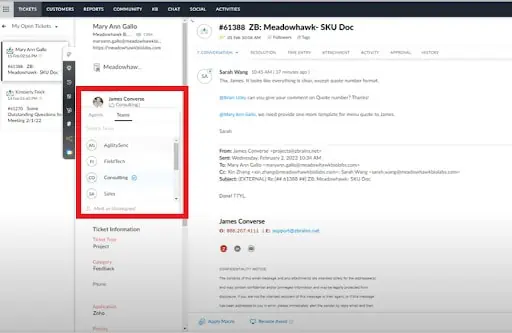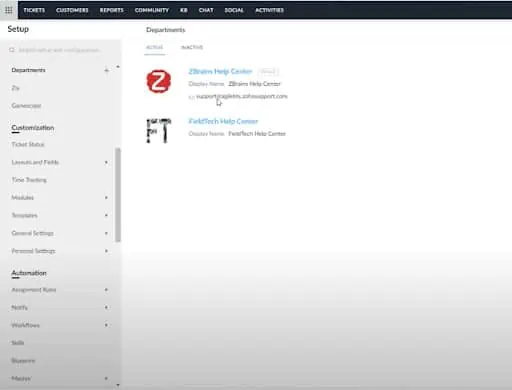Running a help desk system provides tremendous business value by keeping customer requests from falling through the cracks, helping to improve the customer experience and lower churn. Working with a platform like Zoho Desk also benefits managers and executives, who can use support desk performance data to improve customer outcomes and overall productivity.
Generally speaking, Zoho Desk works like any other help desk or customer service desk–think Zendesk or Freshdesk. It issues tickets, assigns them to individuals, and then tracks their progress as each ticket gets resolved.
That said, there is still a lot of confusion that exists about the platform. One question in particular that we often get at ZBrains when our users are setting up Zoho Desk is the difference between Zoho Desk Teams and Zoho Desk Departments–as well as how you use them appropriately.
Because there is a major difference between the two, let us take a closer look at each of them, including the various scenarios in which you would use each.
Zoho Desk Teams and Ticket Management
In Zoho Desk, a Team is a group of “agents” all sitting in the same department. When you upload a new profile to Zoho Desk, they appear as individual “agents.” You can then create “Teams” into which you can add multiple agents. A Team might represent a subdepartment, a project, or any kind of subdivision within a department.
When a customer submits a new ticket, you can assign it to an agent, a Team, or an agent within a Team. That agent or Team will then get to work on the ticket by following the ticket blueprints, which you will have already set up.
Zoho Desk will then track that ticket via various metrics, such as response times, customer satisfaction ratings, and product-specific issues. These metrics can be agent-specific or department-wide.
What are Departments in Zoho Desk?
“Departments” are how you fully segment Zoho Desk to represent the departments or segments within your company. You can, for example, use it to differentiate between different brands, knowledge bases, locations, and other entities within your organization.
When Should You Use Zoho Desk Departments?
In short, we would advise you to only set up a new Zoho Desk Department if you need to. For example, if your organization deals with separate brands or knowledge bases, it stands to reason that you would want to keep these brands apart.
In fact, you may already have separate domains–and, therefore, email addresses–linked to those separate brands. In this case, you would benefit from setting up entirely separate Zoho Desk interfaces to keep them distinguishable from one another.
Another scenario where using different Zoho Desk Departments is appropriate is when you want to keep two departments within your organization separate.
Take, for example, your HR and Customer Service departments. It is highly unlikely that you would want to reassign tasks between these two departments–and you are likely to have different sets of users working in those areas, anyways. In this case, it makes sense to keep them separate and to set up entirely distinct departments.
When Should You Not Use Zoho Desk Departments?
While there are advantages to using separate Zoho Desk Departments, there are cases where the extra effort is not appropriate. Since setting up separate Departments is a big task, it is worth avoiding it, if possible.
Further, remember that there is a hard cut between Departments. As a result, you cannot assign tickets to another department within your organization. If you have multiple teams that collaborate closely, working within a single Department allows them to retain this functionality.
Effectively, as long as your teams operate within the same knowledge base, brand, and department, using “Teams” as your ticketing differentiator should make the most sense.
Of course, we also recognize that every company’s structure and needs are different. If you have any other questions about Zoho Desk Teams and Zoho Desk Departments, reach out to the team at ZBrains. Our team of Zoho experts can help you clarify the specific solution that is best for your requirements.



